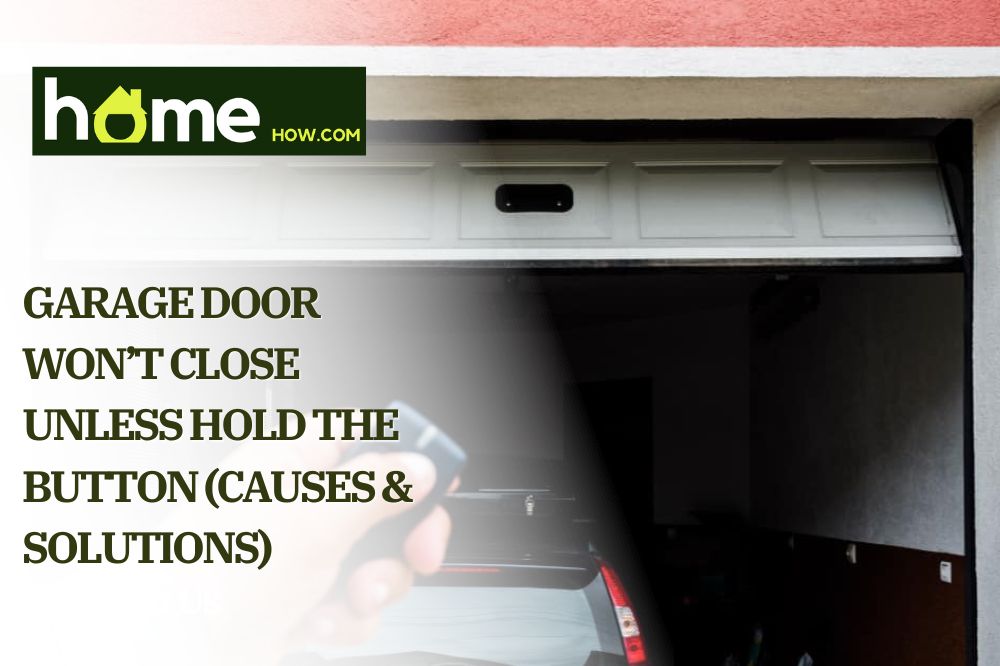Has your garage stopped closing? Does it malfunction whenever you try closing it without holding the button down? Good news! This is a common issue with garage doors, which usually means there’s a simple solution to the problem.
If you’re wondering what’s causing this problem and how to fix it, this is the article for you. We also provide additional information that you may find useful if you frequently experience garage door issues. There’s a lot to cover, so let’s begin!
What’s Causing the Problem?
1. The Sensors Could Be Blocked
Several things could be wrong with the garage’s sensors. The sensors which keep the door from closing down may be blocked, and the block could be caused by the way things are stacked in the garage; perhaps it’s objects being kept in storage or a car that’s parked too close to the garage’s entrance.
The sensors might also be blocked by things that are harder to see, like dust, dirt, soil, spider webs, and tiny rocks. Make sure to clear the sensors of anything that might trigger them, and keep the doors from closing on their own.
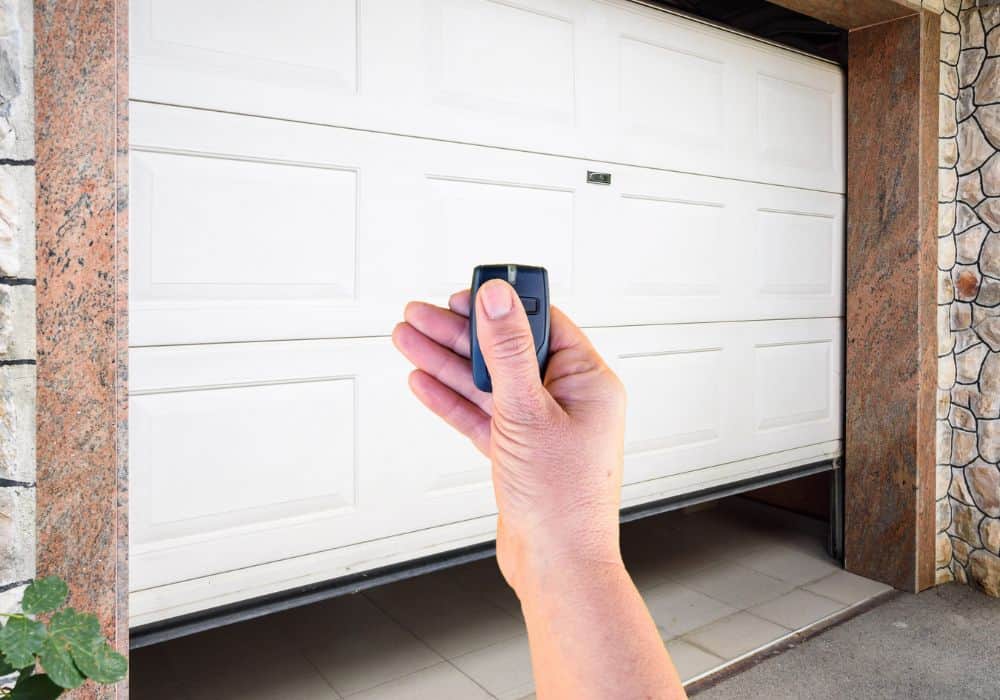
2. The Sensors Could Be Scratched
Garage sensors are made of glass. And since glass is easily scratched and cracked, it’s important to check for any fissures in the sensors when investigating the garage doors.
Upon inspection, if nothing is discernibly visible, you could try cleaning the glass with water and soap. Use something soft like a rag or a paper towel when wiping the glass down so that you don’t damage any blemishes on the surface further.
3. The Sensors Could Be Dirty
Similarly to the glass being damaged, the sensors’ eyes may just be covered by a film of grime or dust. This can be easily remedied by cleaning them with soap, water, and something soft to scrub with.
After cleaning, you should wipe the sensors down with something dry so they aren’t left overly wet, since this could also cause damage.
4. The Sensors Are Misaligned
Because the sensors work in pairs, it’s vital that they mirror each other’s positions. If placed incorrectly, they won’t respond to any stimuli in the garage, and the doors will stay stuck until they align. The sensors should be placed at the same height and angle (in addition to facing the same direction).
If this is what’s causing your garage door to stay shut, then you’ll know the sensors are properly aligned when each one activates and the door responds to pressing the garage remote’s button.
5. The Wires Are Loose or Tangled
Sometimes the problem has to do with the wires. You can find wires in and around the door’s motor. Since these wires are not made to conduct a lot of electricity, they can become faulty rather easily.
Check for any entanglements to see if this is the root cause of the problem. The problem may also be the electrical tape that holds the wires together.
If the wires don’t connect or feel loose to you, reconnect them with new tape or by using twist connectors to group the wires in place.
6. Dead Batteries in the Remote
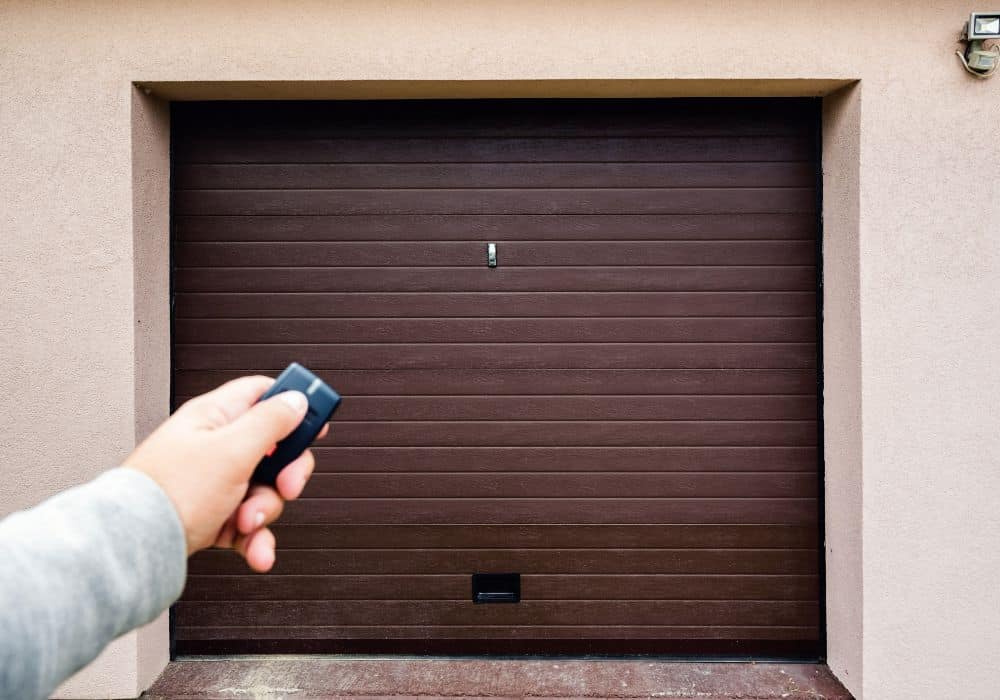
This one is pretty self-explanatory. If your garage door won’t open when using its remote device, it could be that the batteries inside died. The good news regarding this problem is that it has a quick and inexpensive solution.
However, if the remote controller still doesn’t work after replacing the batteries, then this suggests there’s a different problem affecting the garage doors.
7. The Garage Door’s Sensitivity Is Too Low
Because the sensors need to work in order for the garage door to open, it might be useful to check their sensitivity settings on them. You can determine the door’s sensitivity by either running a test yourself or by calling a technician.
To run the test yourself, disengage the garage door opener by pulling the emergency release lever. This will activate the garage door and force it to close. If the sides of the door aren’t even as it’s being pulled down, you’ll know that the sensitivity is off.
If the doors close evenly, the sensitivity is not the problem.
8. Activated Lock-Out Button
The purpose of a garage lock-out button is to prevent the garage door from being activated by a wireless controller (like the remote). If this button is engaged when you’re attempting to use the remote, it’s going to cause issues whenever the garage door tries to open or close.
To tell if the lock-out button is already activated, press the button on the garage’s wall to see if anything lights up. If the lock-out button light illuminates, then you know this is the cause of the door’s problem. Disable the lock-out button and the remote should work just fine.
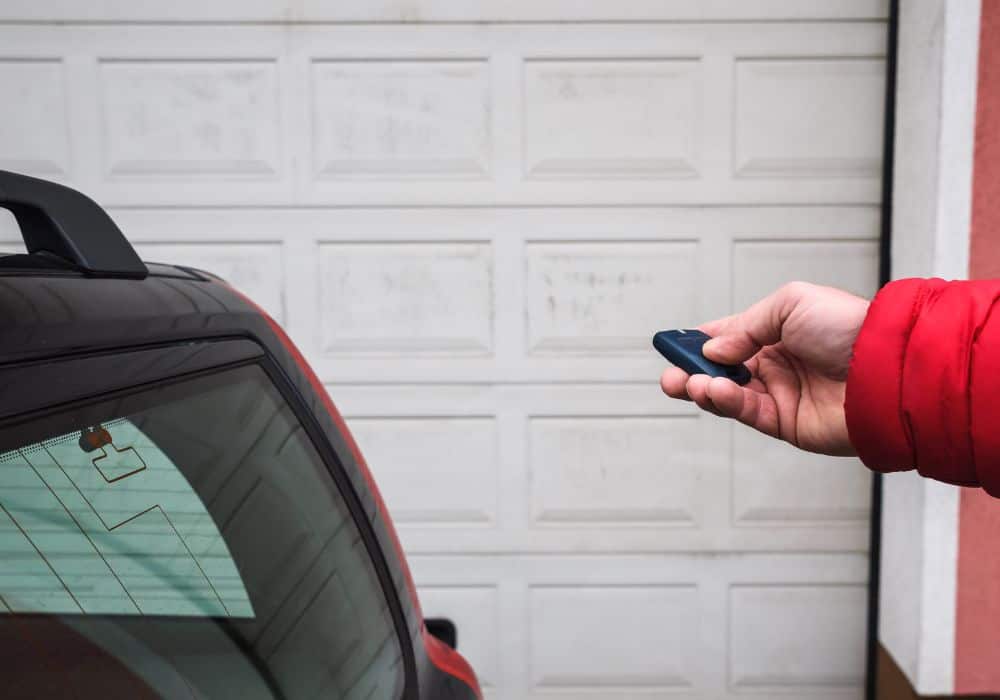
Other Common Garage Door Problems
1. Why Won’t the Door Close All the Way?
There are a few other common reasons why a garage might not open or close all the way. Usually, the door’s tracks, rollers, or trolley are to blame.
- Tracks
The tracks are exactly what they sound like. They’re the mechanical pathway by which the door moves up and down. If there’s something obstructing the tracks of your garage door, it’s likely the door won’t be able to fully close shut.
Remember that even smaller, less visible items or objects are capable of preventing the door from closing. Inspect the tracks carefully to make sure you didn’t miss something which wasn’t obvious at first glance.
Make sure you also check the track which is near the overhead garage door opener as well. This is usually not the culprit, but it could be in your case.
- Rollers
The roller is adjacent to your garage door’s tracks and is the part that moves the door up and down. Since it quite literally “rolls” in a folding formation, any roller which is old, damaged, or rusted may pose a problem to the door’s integrity.
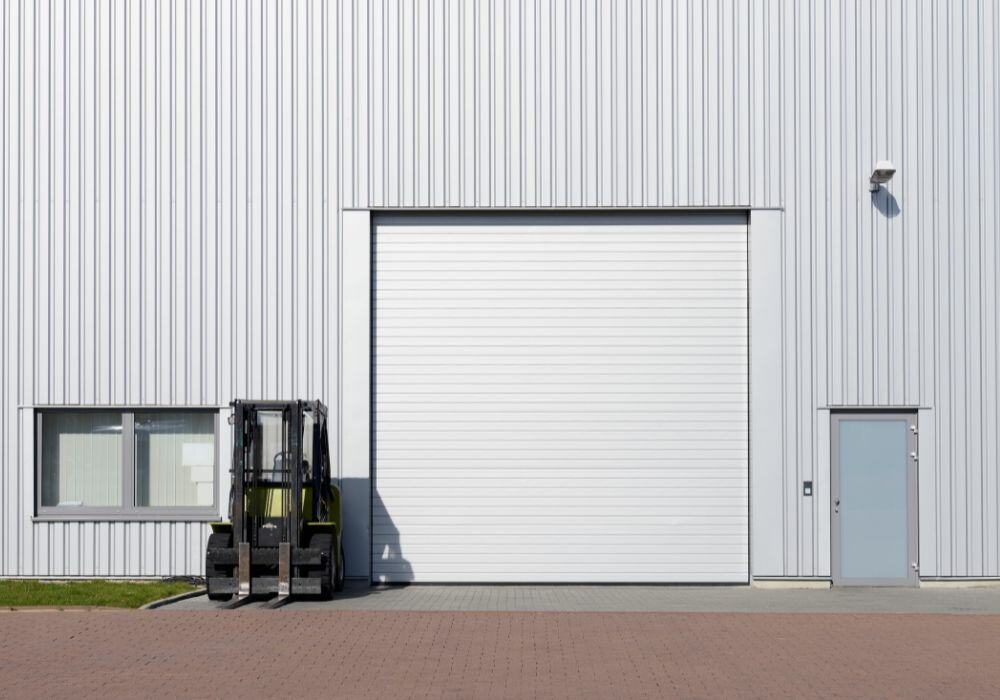
Activate the garage door and watch the rollers move. If the rollers are getting stuck in place, a simple greasing should do the trick. You can purchase lithium or silicone-based grease, which should nicely lubricate the rollers so that they no longer prevent the garage door from halting any movement.
However, if the roller is badly rusted or worn out, you may need to replace these parts entirely.
- Trolley
The trolley connects the garage door with the opener unit. You can find it by spotting the colored rope which usually hangs from it.
Garage doors sometimes go into “bypass mode” if you manually moved them a lot, and bypass mode can keep a door from responding correctly to commands. You can force the garage door out of bypass mode by pulling the overhead rope toward the door.
It’s here when the trolley should be reattached to the chain. Once linked, the garage door should respond to its controller and be able to fully open and close as needed.
2. What to Do When You Can’t Fix the Problem on Your Own
The simplest answer here is to call a professional. On the other hand, since most garage problems are relatively easy to diagnose, time and money can be saved by using DIY tutorials to make minor fixes.
If the issue is still unclear, a professional would be able to both diagnose and fix your problem. While DIY solutions are often helpful, reckless tampering with certain garage door components can result in physical harm to yourself and damage to the device you’re trying to fix.
Furthermore, if it’s taking you too much time to diagnose the problem by yourself, you may want to consider hiring someone to do it for you, since they will be able to do this at a more efficient pace.
Conclusion
Because a lot of garage doors have specific issues in common, the solution to your problem shouldn’t take long to identify or implement. Most complaints about malfunctioning garage doors have to do with faulty sensors, wiring, tracks and rollers, dead remotes, and activated lock-out buttons.
While some of these malfunctions are mechanical in nature, the remedies to others only require a simple tweaking of the garage opener’s device or the door itself. And since the garage door components aren’t too complicated, consider a quick readjustment of the opener’s components before panicking.
Please leave a comment below if you have any further questions about your garage door!
To recap:
- Check the sensors to make sure nothing is setting them off. Clean them if they appear to be dirty or cloudy.
- Untangle any wires which are bunched together or replace the electrical tape grouping them in place.
- Deactivate the garage’s lock-out button.
- Replace any dead batteries in your garage’s remote.
- Inspect the tracks and rollers to see if something is obstructing the movement of the doors.
- Hire a professional if you’re unable to diagnose the problem or don’t feel confident in fixing it.
